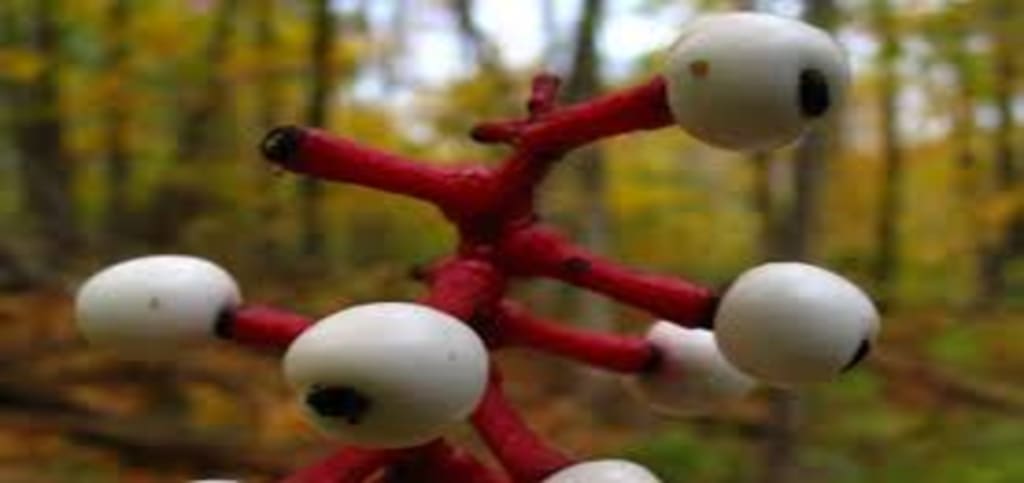Strange plants like human organs.
Strange plants like human organs.

The plant kingdom contains a wide variety of plants, but researchers have discovered a collection of strange plants that resemble human organs that look like parts of the human body. If you're a Halloween fan, you don't need to process scary pumpkins, or buy some plastic parts of the human body, these strange plants will do.
Dental hemorrhaging fungus.
Hydnellum pecki, a fungus, is one of a bunch of weird, human-like plants with different shapes, but it produces a red sticky substance, an object that in this case is very similar to the haemorrhage of teeth.
This substance is made up of sap; or plant juice in the fungus, which, during the night, comes out of a pores found in the upper part of the fungus called cover, when the humidity is high and accumulates in the osspital, and the phenomenon occurs in a small fungus of this type.
Bleeding mushrooms are edible.
Because of the shape of the mushroom top when it bleeds, it's called another name, strawberries and cream, which is edible although it's considered to be part of a group of strange plants that resemble human organs.
It is not toxic, but it is not advised to eat it because of its bitter taste, adding the most precious of its ability to absorb the heavy cesium element of the environment, a radioactive element, which in this way is very harmful.
The doll's eye plant.
One group of strange plants that resembles human organs has been documented as toxic and deadly, a kind of white berries, and its scientific name is Actaea pachypoda, but commonly the doll's eye berries, this kind of white berries has a rectangular part, and it's really the strange part of the plant.
It sits at the end of a red leg, very similar to the doll's eye, and as a sort of warning, it's an evil plant, because it contains a carcinogenic toxin, calms the heart muscle immediately, where it can lead to a severe heart attack causing death.
The damage to the doll's eye plant.
Each berries contains a number of seeds, and despite the high toxicity of this plant, most birds can eat it, they are immune to this kind of poison, the birds eat the berries, and then spread their seeds through their poop.
When you touch different parts of the plant, such as white leaves and flowers, legs and even roots, it can cause some skin blisters to appear, but if you take it, it will cause intestinal inflammation, and it may come to death, and this plant can have enough poison to kill a human being.
The mushrooms of Gerald Doppleling.
Gerald Dapperling's mushrooms contain a distinctive and striking cover, which is very similar to human nipples, of which there are different species belonging to Lepiota boudieri, and whose cover is white, which is gradually becoming dark brown at the centre of the lid.
The surface of the fungus cover looks as smooth as the skin, and the surface covers a kind of thin hair with brown color, and when the wet rises, it drops down and the trunk pops, making up a whole human nipple with a blade.
Poisoned by the mushrooms of Gerald Dahlerling.
Gerald Dapperling's mushroom is one of a group of strange, human-like plants that is also toxic fungi, causing nearly 6,000 people to be poisoned each year in the United States of America, but most of them have some light symptoms.
However, some die because of the toxicity of the fungus, such deaths usually occur when the fungus hunter misknows the fungus and thinks it's edible.
Hoker's lips. Psychotoria elata.
Psychotoria elata is one of the trees found in tropical rainforests in Central and South America, in countries such as Colombia, Costa Rica, Ecuador and Panama, from December to March, the buds appear to be bright red.
Some of the leaves appear to be red lips that attract all of the objects that have the capacity to fly, such as butterflies and birds, and this plant, which is considered to be a mixture of strange plants similar to human organs, has several names, including pink lips or hot lips.
The benefits of Hoker's lips.
The Central American people consider that Hoker's lips are an expression of love, their gift to the world, and they have a range of benefits. The leaves and bark of the Hawker tree can be used to treat diseases such as rashes, ear pains and cough, and the inhabitants of the Panamanian State have used this plant to treat respiratory problems.
Hawker's lip plant is extinct.
Unfortunately, deforestation, along with the great popularity of the Hawker plant, has driven it to the brink of extinction, with the equivalent of 200 football fields removed every 15 minutes from the Amazon rainforest, and the equivalent of one fifth of the area of rainforests throughout the world has been cut down over the past 40 years.
Morrell's false mushrooms.
For many researchers of different kinds of American mushrooms, Morchella is the caviar in the fungus world, and it is common to sell Morells for a minimum of $20 a pound.
The flaw in the lack of ability of experienced fishermen to know the difference between the real Morchella and the fake Morchella, especially since the latter is highly toxic, may cause at least 20 per cent of the deaths humid after a person eats Morchella's false mushrooms.
The danger of Morrell's false mushrooms.
There are several types of Morchella's false mushrooms, some of which are less toxic than some of the others, and the less toxic species among the foods are delicious in many northern European countries, where the fungus has been boiled and rinseed several times to dispose of the toxic substances in it.
Despite these precautions and even after the mushrooms are prepared to eat, the hormone hydrazine gyrometin, even in a precise amount, remains a health risk, especially for women in pregnancy or breastfeeding.
Symptoms of poisoning with false Muriel mushrooms.
Symptoms of false Muriel mushrooms include diarrhoea, nausea, vomiting and severe headache, and at high levels, gerometine can cause severe liver damage, requiring liver transplants to avoid death.
The difference between Morrell's real mushrooms and the liar.
Morchella's real mushrooms from a bunch of strange, human-like plants have a surface that looks like a net on the top of the fungus, with some holes and edges. Our lying Morrell mushrooms have a ripple surface, with lobes, like the curly cortex of human brains.
Researchers from plant scientists have been able to detect and study the existence of alien plants that are like human organs, from a beautiful form and multiple benefits, including those that are toxic and dangerous.






Comments (1)
Hey there, just wanna let you know that this needs to have the disclaimer added to the beginning or ending, stating that it was created with the help of AI 😊